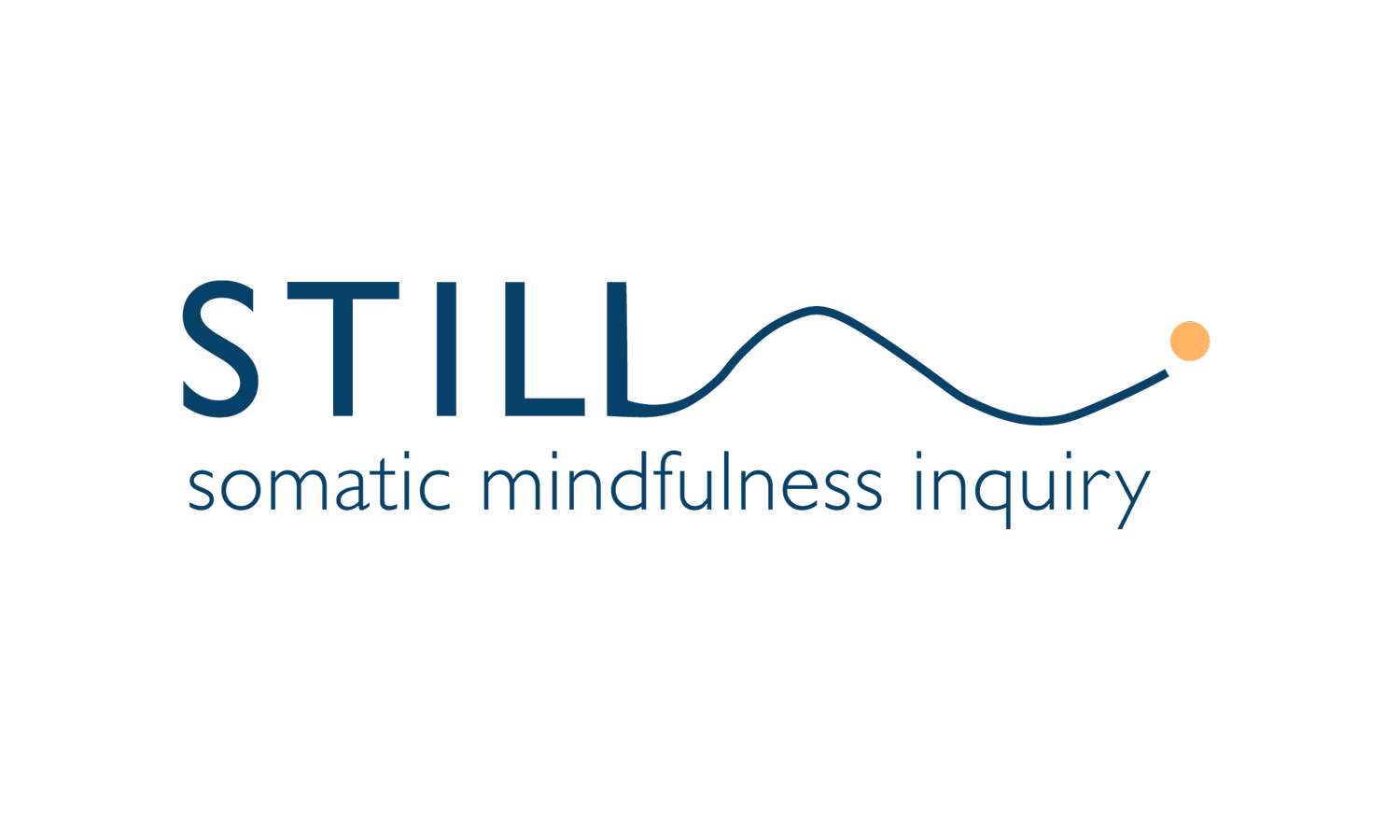Being With Traumatic Memory
“This is an event in the past. I am grounded in this moment and witnessing how it is coming through in the present.”
Trauma is stored in our body as sensation or energy along with associated memories. We stored it in our body because we were overwhelmed at the time. When people have support to process and release the effects of a traumatic event when it happens, it moves through and leaves less of an imprint.
Traumatic memories don’t tell time. They are trapped like an insect in amber. We can process and release traumatic memory from the present moment using mindful somatic (body) inquiry. We have an aversion to this because it means revisiting what overwhelmed us in the past. It’s painful. Part of how we bring our files up to date is by realizing somatically that in this moment, we are safe.
Energies in our body are stored memories of our own experience. They are part of our history and will always influence our present. The job of our primitive brain is to remember danger so we can avoid it. It hijacks the more evolved parts of the brain. This is how we evolved and it serves us to some extent.
Our primitive brain keeps bringing up memories of past trauma in an attempt to be sure we don’t forget the danger. When we turn towards instead of turning away, we can listen and receive the whole message. We can connect with and reassure the part of us who was hurt and is no longer in danger.
Our perception of danger is unconscious. It happens in the background. We can’t tell ourselves to not be afraid or to not go into fight/ flight/ freeze/ fawn to protect ourselves. That’s not how this system works.
What does work is to witness the past from a solid base of awareness in this present moment. How do we do that when traumatic memory keeps pulling us back into the past? One way is to practice welcoming strong or distressing sensations as part of knowing who we are. We genuinely want to deeply know ourselves. Even the parts that were hurt. Especially the parts that are hurt and afraid. We can realize in our whole being that we are now safe.
We do this with attuned empathy, by being with someone who is strong and present, and who can help us witness what happened to us. We may not have had this in the past. Our more resourced adult self can be here now.
Bring to mind a memory of joy. Place your hands on your heart and feel the warmth and connection. Open your arms and feel the expansiveness in your chest. Take a few deeper breaths. Notice how that feels.
Now bring to mind something that is a bit difficult. It could be anxiety about moving back into social engagement, or a memory of something from your past. Notice the energy in your body, your breath, and thoughts in your mind. Our body might respond with contraction or tightening, and often we realize we’re holding our breath.
A warm open-hearted welcome doesn’t mean we’re okay with what happened. It means we acknowledge that it happened. We can let the reality of it in.
Do this practice with your eyes open so you can remain aware of your surroundings. You are safe here in this moment. You are not in the past. You are witnessing what is coming through in your body. There are effective tools for staying present and connected. The guided practice below will walk through this with you and help you stay steady as you inquire and connect.
Is this energy or sensation here to hurt you? Sometimes we feel a contraction in the throat or a heaviness in our chest and it feels like we can’t breathe. Notice the air is still getting through. Take a few deeper breaths. Inquire again – is this energy malicious or trying to hurt me?
If not, why is it here? Stored trauma is here to warn us to not let down our guard, and it is here to be seen and attended to. The part of us that still feels scared and alone needs help to realize we are now safe. What happened was in the past. It is not happening now in this moment.
Notice if you start to disconnect and go into a flight response when your mind starts thinking about something else. This is nuanced work that we need to approach with kindness and no pressure. It is a process of getting to know ourselves. We can look to see if we still need to dissociate the way we did as a child. It was a good strategy then when we had few options. Come into connection now.
Experiment with some welcoming phrases.
I’m glad you’re here.
Thank you for remembering and warning me of danger.
I want to connect with you. I might have turned away from you for decades and I’m here now. I am listening.
I am sad you were alone with this pain. What happened was not your fault. I am here with you now. It is safe to let down your guard.
Continue to notice your body, breath and thoughts in your mind. If memories come up, stay as a witness to them from this moment in time. It may be necessary to have some help with traumatic memories. When we practice welcoming sensation and memories of less intensity, we can build a strong relationship with ourselves.
My heart is open to knowing all of me. I am so happy you’re here.
Try the Warm Open-Hearted Welcome practice below.
